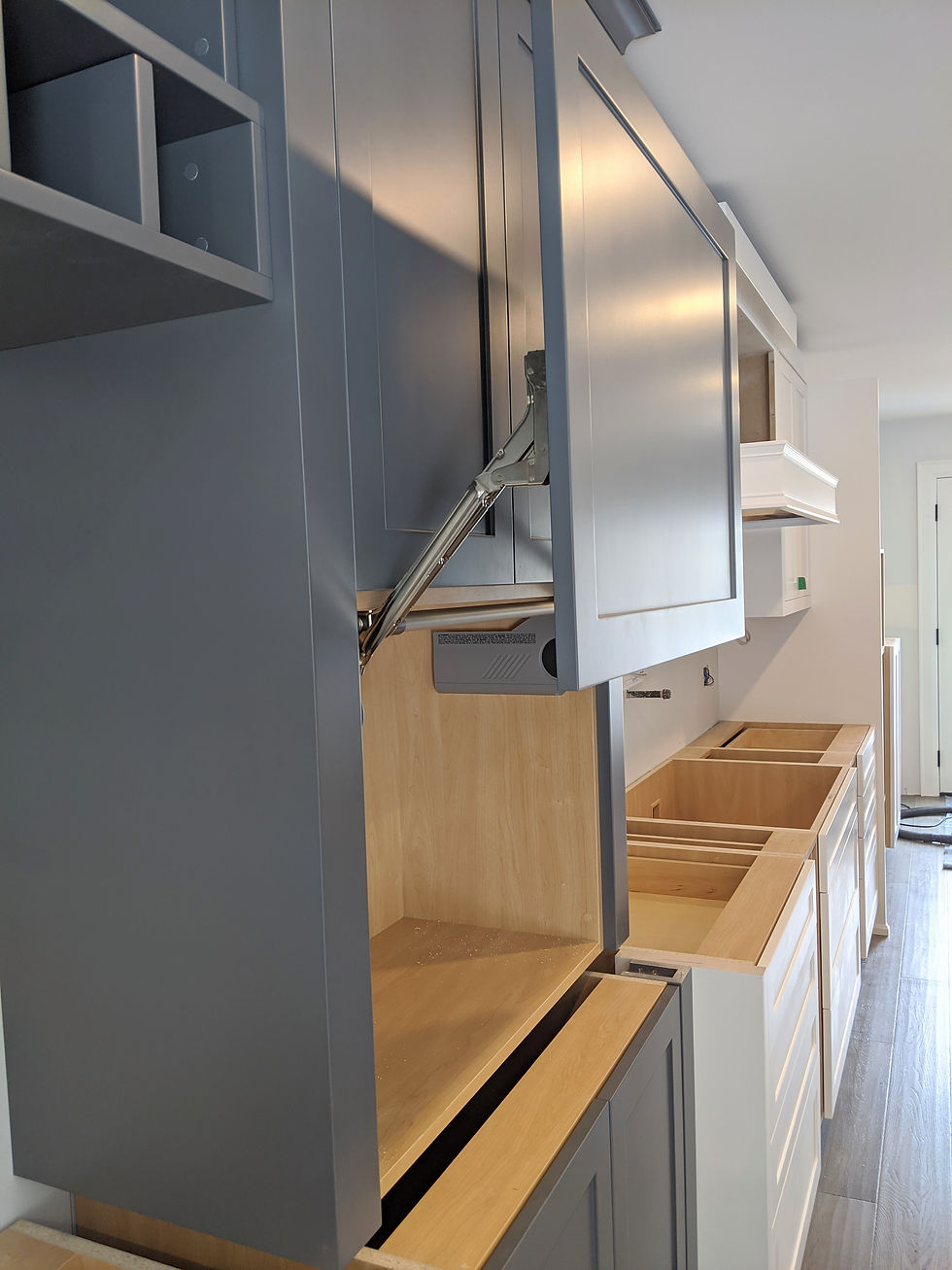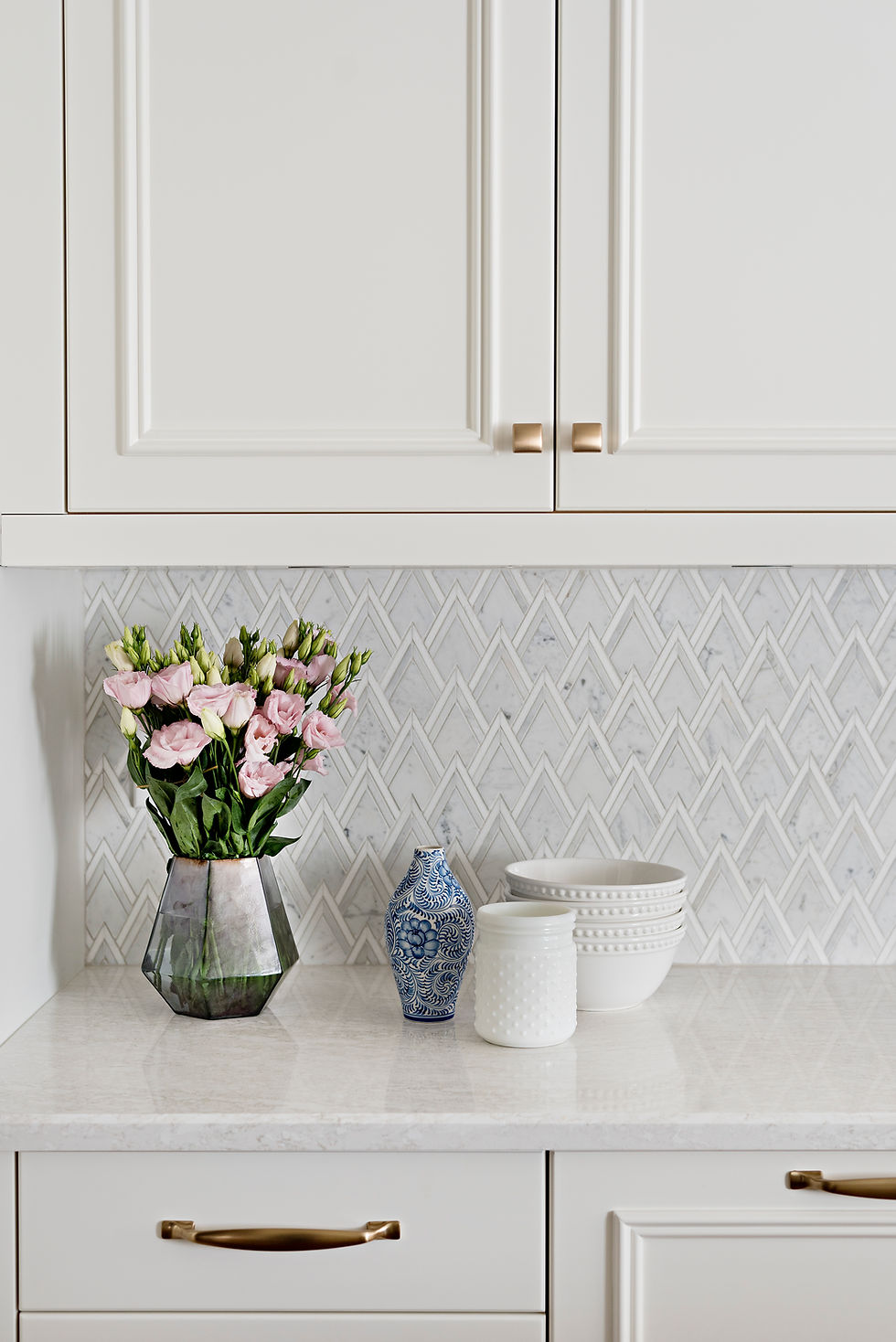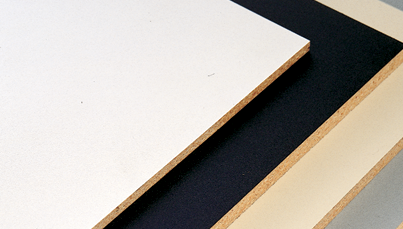Navigating Custom Cabinetry
- Nikki

- Nov 6, 2020
- 4 min read
Today I'm going to deep dive into the parts of custom cabinetry and break down, as simply as possible, how to navigate the different components. As some of you may know if you have been following us for any length of time, my career and design background began in custom cabinetry. To say I'm passionate about millwork would be an understatement and I often get carried away talking about millwork and showcasing our cabinetry designs to our clients.
There's a lot to understand about custom cabinetry that can dictate pricing, but as mentioned, I'm going to attempt to simplify the key components.
Design: @nfgdesigns
Cabinetry: @crisalcustoms
Break It Down Into Two Parts
Part 1: Cabinetry Interior
The inside of the cabinetry (ie. when you open your doors and drawers) consists of what is referred to as the 'box material'. This is most frequently made from 3 different options depending on the millworker and their standards. The first being white melamine (least expensive, but also least practical), Hard Rock Maple Melamine (mimics the look of wood without the plywood price point) and a plywood box with a birch veneer (being the most expensive). Still confused? Hang on...
The melamine boxes (either white or HRM) are composed of ground up wood chips that are glued and pressed together, then layered with the melamine on the top and bottom surfaces of the board. This forms your shelves and cabinet boxes. A common misconception about HRM melamine is that it is cheap and won't stand the test of time, and this simply isn't true. The only factor to be aware of when using HRM for your cabinetry interiors is moisture / water. Because the material composite is particleboard, if a significant amount of water sits on the shelves or cabinet boxes for an extended length of time, the shelves or material can start to bubble or warp. The likeliness of this happening, however, is rare unless you really misuse and abuse your kitchen cabinets. There are shelf liners and sink mats that can be purchased if you are truly worried or concerned about water absorbency.
Left image: Particle board melamine
Right image: Plywood
In addition to what the boxes are made of, there's also the drawers themselves. The most common drawers seen or used is solid wood dovetail with undermount soft close tracks.

Shown above: Interior boxes without the countertop - HRM melamine with wood dovetail drawers.
Part 2: Cabinetry Exterior
This is what makes your custom cabinetry come to life! There are a lot of different material options for the exteriors of your cabinetry, but again - let's break it down into 3 simple categories.
Painted (MDF)
Stained (Wood - solid or veneer)
Pre-finished Melamine (particle board core)
A painted finish for the exterior of your cabinetry is one of the most undervalued processes and costs. A good finisher makes all the difference and many people do not realize the steps and lead time required for a proper finishing job.
Paint should be applied to an HDF/MDF substrate for the best finish and longevity for your cabinet faces. While the perception might be that a solid wood door is 'stronger', solid wood expands and contracts. So where the stile and rails of the doors and drawers join, your paint will start to crack and separate over time. Also, concealing a wood grain with a painted product can be a challenge as well.
However, any moulding profiles, in my humble opinion, should be solid wood. This is because with a solid wood moulding, the joints in the material are smaller and less likely to separate and also a wood profile is far more crisp and sharp than it's MDF alternative.

Above: MDF doors with raised panel mould.
Design: @nfgdesigns
Cabinetry: @crisalcustoms
With stained wood cabinetry, if the door has a profile to it (ie. shaker) it is typically a solid wood door. There are many different wood species that can be chosen for a stained finish. The most common being: Maple, walnut and oak.
If the design is more contemporary and the doors are slab, then it's common for the material to be a wood veneer. This means there is a thin layer of wood applied to the front and back of the doors, with a center substrate (most commonly: particle board).
Above: Stained walnut vanity
Design: @nfgdesigns
Cabinetry: @timbowdin
And lastly, there are pre-finished materials. This is a melamine product with a particle board substrate (like the HRM cabinet boxes) and is typically chosen for unique colours, textures, price points and shorter manufacturing times (as there's no labour for finishing involved).
Above: Pre-finished melamine wood grain.
Design: @nfgdesigns
Cabinetry: @crisalcustoms
In conclusion
You have now learned about the 2 largest components that go into custom cabinetry. Of course, there is a lot more detail that is involved in cabinetry such as: drawer tracks, hinges, accessory inserts, design details and mouldings, number of drawers, paneled appliances, etc. that can shift your pricing one way or the other. Being sure to ask these types of questions from your cabinetmaker is crucial when it comes to understanding the quotation you have been given. You can't compare an orange to an apple.
To learn more about cabinetry, you can watch an interview I did with Crisal Custom Cabinets here, or watch our IGTV video here.
Happy weekend!













Comments